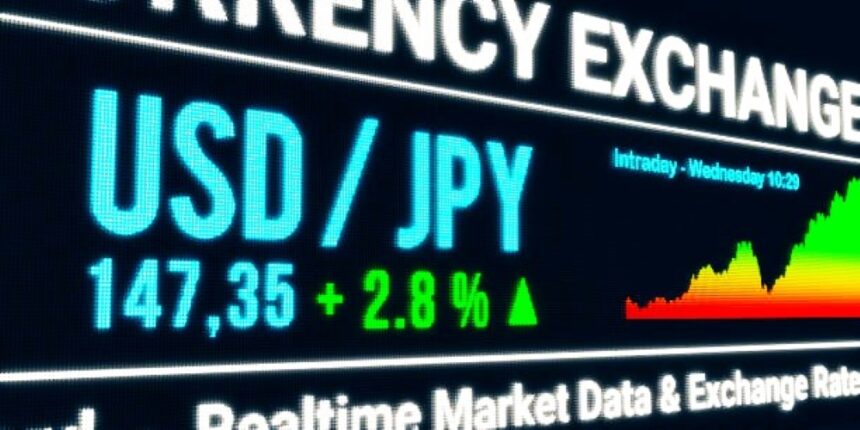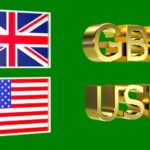Japanese Yen Stays Cautious as Traders Brace for Pivotal FOMC Decision.
The Japanese Yen (JPY) continues to navigate through choppy waters as global traders adopt a cautious stance ahead of the Federal Reserve’s (FOMC) pivotal interest rate decision. While the JPY initially lost ground during the Asian session on Tuesday, it quickly found buyers as market sentiment turned risk-averse. Ongoing geopolitical unrest and unresolved trade uncertainties are keeping investors on edge, thereby underpinning demand for the safe-haven currency.
Despite some intraday selling, the downside in the JPY remains limited. With the Bank of Japan (BoJ) signaling a readiness to hike again in 2025 and the Federal Reserve expected to outline its future rate path, the USDJPY pair remains highly sensitive to any shifts in policy direction or geopolitical risks. The outcome of the two-day FOMC meeting that begins Tuesday will likely dictate the next significant move for the currency pair.
Japanese Yen Gains Traction Amid Geopolitical and Trade-Driven Safe-Haven Demand
The Japanese Yen has traditionally benefited during times of market stress due to its perceived safe-haven status. This reputation is once again playing a role as traders digest a flurry of geopolitical headlines that could derail global risk sentiment.
One of the key drivers supporting the JPY is the uncertain trajectory of U.S. trade policy under President Donald Trump. The administration’s unpredictable approach to tariffs has unsettled markets despite some hopeful signs of easing tensions with China. Over the weekend, Trump doubled down on protectionism by announcing a 100% tariff on all foreign-produced movies, an unusual move that further clouds the trade outlook.
Moreover, geopolitical flashpoints across Eastern Europe and the Middle East are reinforcing investor risk aversion. Ukraine’s renewed drone strikes on Moscow and its incursions into Russia’s Kursk region have escalated tensions despite a temporary ceasefire declared by Russian President Vladimir Putin. Meanwhile, the situation in the Middle East took another alarming turn as Israel retaliated against Yemen following a missile attack by Iranian-backed Houthis that targeted Israel’s main airport. The Houthis have threatened further strikes, vowing to blockade Israeli airspace.
These developments have kept investors wary and bolstered safe-haven demand, allowing the JPY to remain relatively resilient, especially in the face of U.S. Dollar strength stemming from robust domestic data.
BoJ Policy Still in Focus Amid Divergent Global Central Bank Outlooks
The Bank of Japan remains a critical driver of JPY sentiment. Last week, the central bank maintained its policy stance but struck a more cautious tone by trimming its growth and inflation forecasts. While this led some market participants to push back expectations for a rate hike as early as June or July, the BoJ reiterated its intent to continue normalizing policy if economic conditions allow.
This stance keeps the door open for further tightening in 2025, a departure from the ultra-dovish posture that defined the BoJ’s stance for decades. However, compared to the Federal Reserve, which may still cut rates this year, the BoJ’s potential tightening creates a divergence in monetary paths. This divergence has prevented USD/JPY from breaking out decisively to the upside, despite USD resilience.
BoJ Governor Kazuo Ueda remains under pressure to balance inflation control with fragile economic growth. Japan’s inflation remains modest compared to other developed economies, and wage growth remains uneven, prompting the central bank to act slowly. Nevertheless, even a slow but steady path toward normalization could lend longer-term support to the JPY.
US. Economy Shows Resilience Ahead of FOMC, Supporting USD
The U.S. economy continues to defy recession fears. The latest ISM Services PMI data for April surprised markets on the upside, indicating that growth in the U.S. services sector is accelerating. This adds to the narrative of a resilient U.S. economy and complements strong labor market data, which further dampens expectations of an imminent recession.
As the FOMC meets this week, investors will be keenly focused on any changes to the Fed’s economic projections and dot plot. Fed Chair Jerome Powell’s post-meeting remarks will also be scrutinized for any hints about the timing and magnitude of future rate cuts. Markets have largely priced in at least one rate cut in the second half of 2025, but any hawkish surprise could propel the USD higher and pressure the JPY.
However, Fed policymakers are walking a tightrope. Sticky inflation, especially in services and housing, makes it risky for the Fed to ease too quickly. At the same time, they must consider the potential lagged effects of past rate hikes. A balanced tone that emphasizes data dependency may not offer a clear directional bias for USD/JPY, reinforcing a wait-and-see approach among traders.
Traders Sideline USD/JPY Positions Ahead of Major Event Risk
With so many conflicting forces at play, investors are choosing caution over conviction. The USD/JPY pair has seen relatively muted movement as traders await a clearer signal from the FOMC. Despite several factors supporting the USD, including strong economic data and resilient risk appetite, the JPY’s safe-haven appeal and the potential for BoJ tightening limit the upside.
Market participants appear reluctant to make bold directional bets until the Fed’s guidance is revealed. Moreover, traders are also watching developments on the trade and geopolitical fronts. With President Trump teasing new trade agreements and hinting at possible tariff reductions on China, any sudden breakthroughs could swiftly alter sentiment and shift capital flows.
Technical Outlook: USD/JPY Faces Resistance Amid Uncertainty
From a technical standpoint, the USD/JPY pair remains capped below a key resistance zone near 158.00. A sustained move above this level could open the door for a rally toward the multi-decade highs seen earlier in 2025. However, failure to break higher may lead to consolidation or even a short-term correction, especially if the Fed signals dovish intent.
On the downside, initial support lies around 156.50, followed by 155.80. A decisive break below these levels would suggest increased bearish momentum, potentially bringing 154.00 into view.
Momentum indicators such as RSI and MACD are showing signs of fatigue, reinforcing the likelihood of range-bound action until the FOMC delivers a decisive catalyst.






